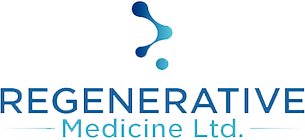Regen Med Asia / Products – Stemcell / The Process
The Process
Harvesting
When mesenchymal stem cells are harvested from the umbilical cord, there are two ways to isolate immune privileged cells. The quick and less expensive method uses harsh chemicals for extraction. The optimal method uses a process called micro-dissection (manually and gently coaxing the cells to a culture plate). This lab method is critical as to whether the cells are damaged epigenetically or not. The harsh chemical method damages the cells, while the manual method allows them to be cultured and more effective clinically.
Culturing
Cells isolated from the umbilical cord they must be expanded. As MSCs expand in culture, they start to loose their secretome (ability to communicate), or the secretions that come off of the cells and communicate to other cells to repair (exosomes). Passage 1 or P1 cells are only grown to one confluence, meaning after the dish is 80% full, it is split and put into another dish. Once those two dishes are at 80% confluence, the cells are flash frozen and still in a prime mortal state and are the most clinically effective according to published peer reviewed research. If the cells are cultured further to passage 3, 4 or even 9 they become unstable, very large and lose the ability to communicate. The resulting clinical outcomes are very poor as well as patient satisfaction. Passage 1 cells provide doctors very consistent outcomes and the ability to predict how well treatments and conditions will improve using regenerative medicine.
Priming
After 10 years of clinical experience, the knowledge now exists to “ prime “ or ”instruct” Passage 1 (P1) mesenchymal stem cells to help support the clinical objectives of the physician. The cells can be gently exposed to certain peptides and natural compounds to sensitize and educate them on the repair task that is the objective of the doctor. Substances will be added to the cells prior to clinical application and these compounds tell the cells what types of tissue they will most likely be involved in regenerating.
Priming for Indications
- Orthopedic injections
- Neurological regeneration
- Skin and collagen regeneration
- Liver conditions
- Gastrointestinal
- Anti-aging
- Autoimmune dysfunction
